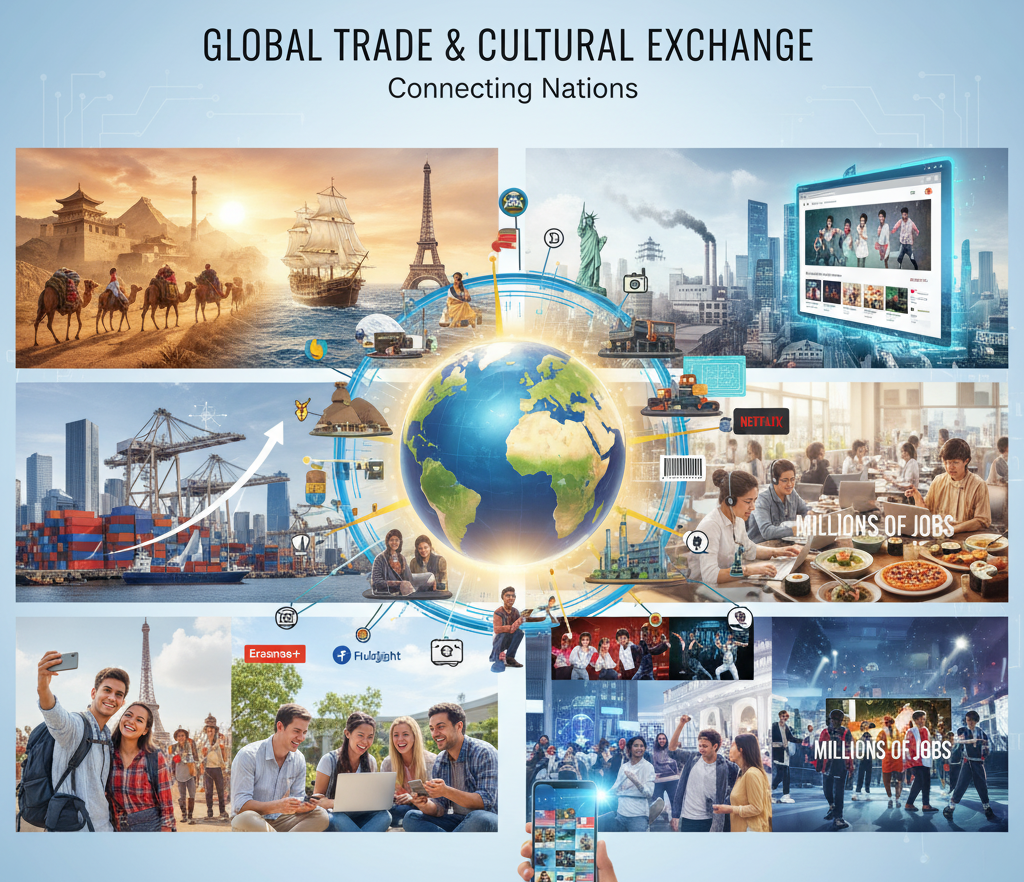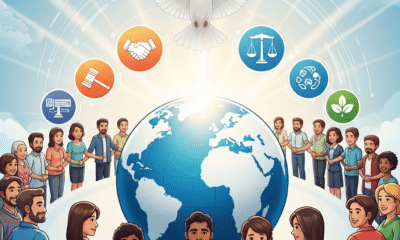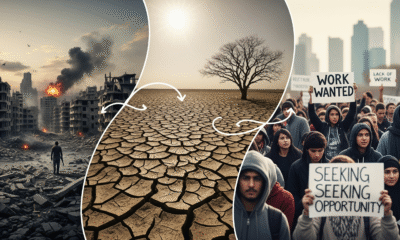Introduction
From the Silk Road of ancient times to today’s digital trade networks, global trade and cultural exchange have always been powerful forces shaping civilizations. Trade moves more than goods—it carries ideas, innovations, and traditions across borders. Similarly, cultural exchange deepens understanding, builds trust, and strengthens diplomatic relations among nations.
In today’s interconnected world, trade is no longer confined to physical commodities. It includes services, intellectual property, digital products, and even cultural exports like movies, music, and esports. Meanwhile, cultural exchange—whether through tourism, student programs, or digital platforms—plays a vital role in bridging divides.
This article explores the intertwined roles of global trade and cultural exchange, their impact on economies and societies, and the challenges and opportunities they present in the 21st century.
The Evolution of Global Trade
- Historical Roots
- The Silk Road connected Asia, the Middle East, and Europe, carrying not just silk and spices but also religions, languages, and philosophies.
- The Age of Exploration in the 15th–17th centuries opened sea routes that connected continents.
- The Industrial Revolution
- Rapid industrialization expanded international trade.
- Colonialism shaped global economic systems, often unequally.
- Modern Trade
- The rise of global trade agreements like WTO frameworks, NAFTA, and the EU’s single market.
- Digital trade: e-commerce platforms like Amazon, Alibaba, and Shopify making goods accessible worldwide.
The Role of Global Trade Today
- Economic Growth
- Trade contributes significantly to GDP growth.
- Example: China’s rise as a global economic powerhouse fueled by export-led growth.
- Innovation and Technology Transfer
- Cross-border partnerships lead to innovation in AI, renewable energy, and healthcare.
- Global trade in knowledge-based industries accelerates development.
- Job Creation and Employment
- Export industries generate millions of jobs globally.
- Example: The IT outsourcing industry in India employs millions and contributes to global service chains.
- Consumer Benefits
- Access to diverse, affordable goods and services.
- Example: Smartphones combine components from multiple countries, showcasing supply chain integration.
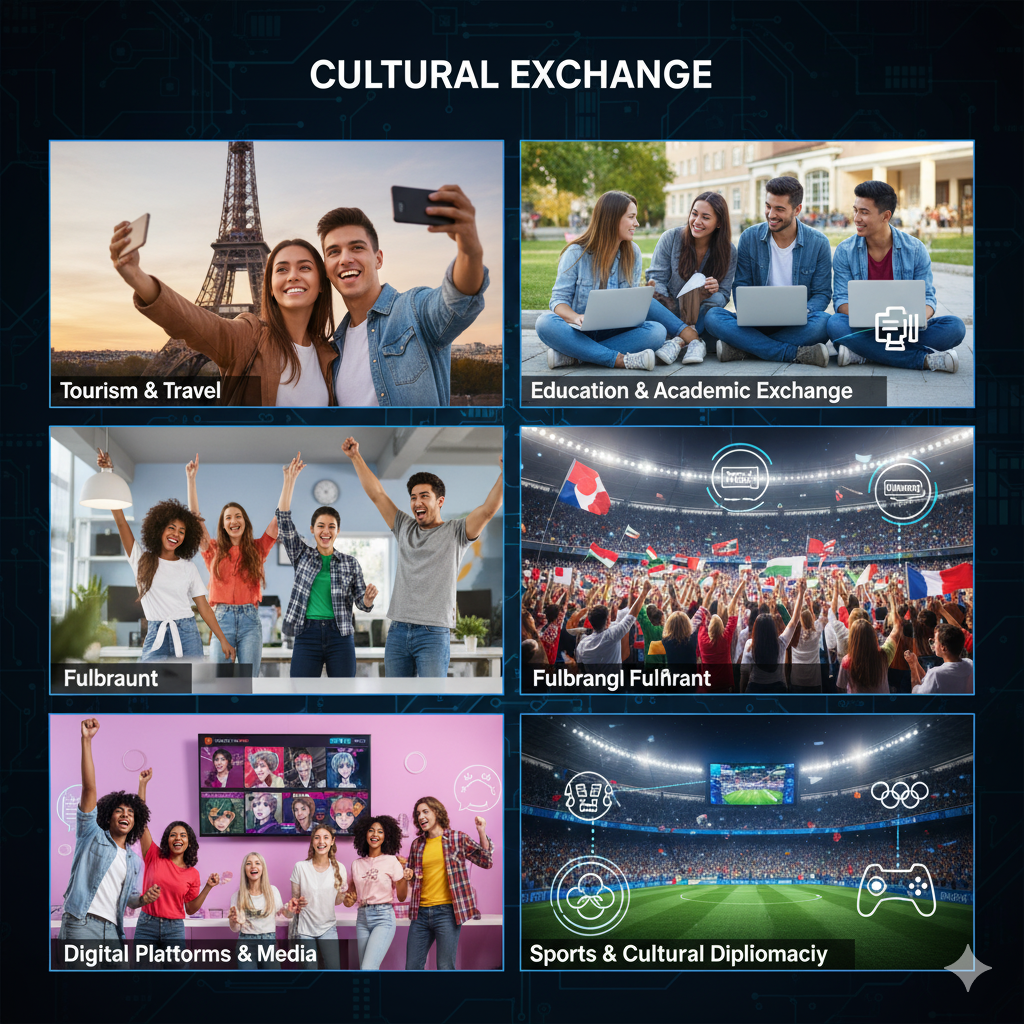
Cultural Exchange – The Human Side of Globalization
- Tourism and Travel
- Tourism is one of the largest industries worldwide, creating jobs and fostering cultural awareness.
- Example: France, Japan, and Italy rely heavily on tourism for cultural diplomacy.
- Education and Academic Exchange
- Student exchange programs like Erasmus+ (EU) and Fulbright (US) promote intercultural understanding.
- International universities attract global talent, creating “knowledge bridges.”
- Digital Platforms and Media
- Streaming platforms like Netflix and Spotify allow global access to films and music.
- K-Pop, anime, and Hollywood dominate global cultural landscapes, influencing fashion, language, and trends.
- Sports and Cultural Diplomacy
- Events like the Olympic Games and World Cup serve as symbols of unity.
- Esports, too, are creating new spaces for cross-border engagement.
The Interdependence of Trade and Cultural Exchange
- Trade brings not just goods but also values and traditions.
- Cultural products (movies, fashion, cuisine) are now global commodities.
- Example: Japanese sushi, Italian pizza, and Indian yoga are part of international cultural trade.
- Soft power: Nations use cultural exports to strengthen diplomatic relations.
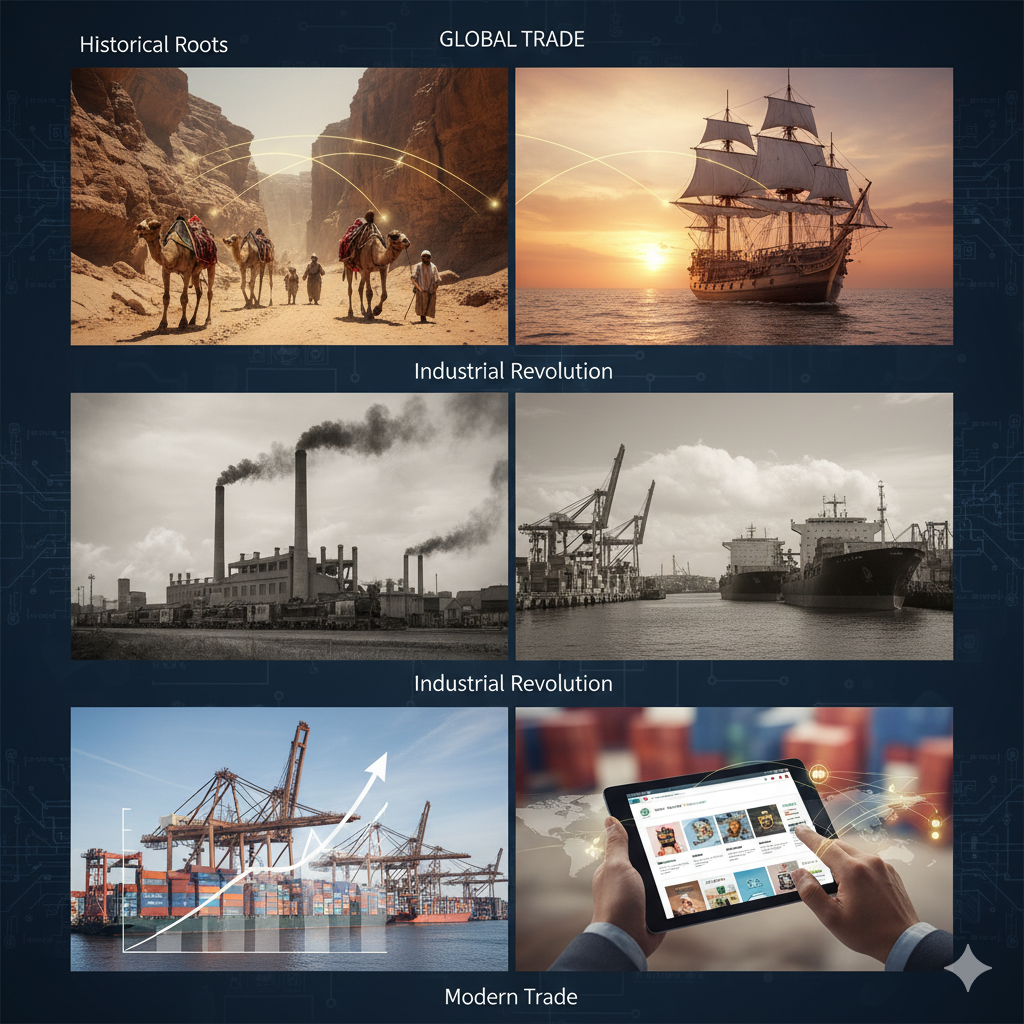
Challenges in Global Trade and Cultural Exchange
- Trade Wars and Protectionism
- The US–China trade conflict highlights tensions in global trade.
- Protectionist policies can disrupt global supply chains.
- Cultural Homogenization
- Globalization can lead to dominance of certain cultures, risking the loss of indigenous traditions.
- Example: Hollywood’s global reach overshadowing local film industries.
- Inequality in Trade Benefits
- Developing countries often remain at a disadvantage in trade negotiations.
- Wealth distribution gaps widen between nations.
- Digital Divide
- Unequal internet access limits participation in cultural and digital trade exchanges.
Case Studies
- European Union (EU) – A Model of Economic and Cultural Integration
- The EU single market allows free movement of goods, services, capital, and people.
- Programs like Erasmus+ strengthen cultural unity among member states.
- China’s Belt and Road Initiative (BRI)
- Connects over 60 countries through infrastructure, trade, and cultural programs.
- A mix of economic ambition and cultural diplomacy.
- Hollywood and K-Pop
- Hollywood dominates the global film industry.
- South Korea’s K-Pop exemplifies how cultural exports boost national branding and economic growth.
The Future of Global Trade and Cultural Exchange
- Digital Globalization
- E-commerce, blockchain-based trade, and Web3 platforms are transforming international commerce.
- Example: Smart contracts for global trade logistics.
- Sustainable Trade Practices
- Green trade policies to reduce carbon footprints.
- Rise of eco-friendly products and fair-trade certifications.
- Cultural Diversity as a Strength
- Encouraging protection of local traditions alongside global integration.
- UNESCO’s cultural heritage protection initiatives play a key role.
- AI and the Metaverse in Cultural Exchange
- Virtual museums, augmented reality exhibitions, and metaverse concerts will revolutionize cultural interactions.
- Example: VR tours of historical sites make culture more accessible worldwide.

Conclusion
Global trade and cultural exchange are inseparable elements of globalization. Trade fuels economic growth and innovation, while cultural exchange enriches societies with shared values and deeper understanding.
Yet, challenges remain—rising protectionism, inequality, and cultural homogenization threaten the balance. To build a more inclusive future, nations must adopt sustainable trade policies, embrace diversity, and invest in cross-cultural dialogue. As technology continues to transform trade and culture, the next frontier of globalization will not just be about exchanging goods—it will be about sharing ideas, building empathy, and fostering unity in diversity.

